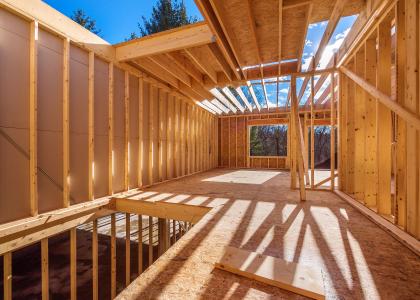Much attention has been recently focused on the gap between the predicted and actual energy savings achieved by residential energy retrofit projects and programs, including low-income weatherization programs and customer-funded programs such as Home Performance with ENERGY STAR®. The difference between pre-retrofit baseline energy use, post-retrofit predicted energy savings based on energy simulation models, and the actual post-retrofit energy savings as determined by billing analysis (i.e., the realization rate) has led some to question the validity of energy models and their use in retrofit programs. Some have even suggested that in light of the discrepancies between predicted and realized energy savings, we should throw out the models altogether.
Among efficiency practitioners, the limitations of simulation models aren’t news. Studies comparing the results of common residential energy simulation models with actual home energy use have shown discrepancies between estimated energy savings and realization rates, sometimes over-predicting and other times under-predicting savings. For example, some models have a tendency to overestimate baseline energy use and, as a result, overestimate the predicted savings from recommended retrofit measures. In response, there has been a concerted effort to develop tools and techniques to improve the accuracy of modeled predictions to ensure that individual customers and program administrators receive more accurate predictions of the energy savings they can expect from their home retrofit projects and programs.
One of the most effective techniques for improving accuracy is calibration of the model for a home with historical energy use data for the property through utility bills—essentially correcting the model to account for construction quality (“as built”) and the occupants. The Building Performance Institute (BPI) has developed a standard for energy model calibration, ANSI/BPI-2400 Standard Practice for Standardized Qualification of Whole-House Energy Savings Predictions by Calibration to Energy Use History . The standard defines a method for using pre-retrofit utility bills to bound predicted energy savings by calibrating the pre-retrofit baseline models with monthly utility bill data (or, if this data is not available, annual energy consumption by fuel) and then using the calibrated model to calculate energy savings. Standardized operating conditions for use in calculating predicted energy savings are provided.
In a study for NYSERDA, Performance Systems Development found that model calibration can significantly increase the accuracy of energy savings predictions and project-level realization rates (as illustrated by the figure below). Using ANSI/BPI-2400, the median realization rate for a set of projects in NYSERDA’s home performance program increased from 61% to 91%. Importantly, the analysis found that the difference was largely due to over-prediction of baseline energy use and thus in the absolute value of actual savings realized; the percent savings predicted by the models was very close to the actual percent savings. Furthermore, the study had valuable findings for contractor and program best practice: “the use of model calibration following the ANSI/BPI-2400 standard forces the user to address inaccuracies in the baseline energy model regardless of the level of detail entered about the project. Therefore, model calibration allows for reduced detail in the baseline models that undergo program review thereby reducing contractor effort and speeding up review time.” The National Renewable Energy Lab (NREL) is working on automated calibration procedures for residential simulation models that could further simplify the process.
Energy Savings Predictions without (left) and with (right) Model Calibration
By improving the pre-retrofit (baseline) energy use model, calibration can improve the accuracy of predicted energy savings, or realization rate, expressed as the X/Y ratio. As the modeled baseline and predicted savings better match actual pre- and post-retrofit energy usage, realization rates increase.
Source: Performance Systems Development 2015
To date, the use of model calibration has been limited and is required by few, if any, residential retrofit programs. While calibration would require investment in training of contractors on calibration methods and in additional time for each project, the benefits are clear. To get started, programs should consider setting model calibration requirements for projects that exceed a certain cost or predicted savings threshold. For new contractors, programs could require calibration on a set number of initial jobs as a means for demonstrating modeling proficiency. Incentives could help offset the additional contractor time required for calibration; alternatively, calibration could unlock additional incentives, preferable financing terms, or other benefits.
With the potential to move realization rates above 90%, calibration represents a solid forward step to ensuring that predictions align with actual energy savings from home retrofits. Combined with other improvements in modeling procedures, it’s not too much to expect achieving average realization rates of 100% in the future.




